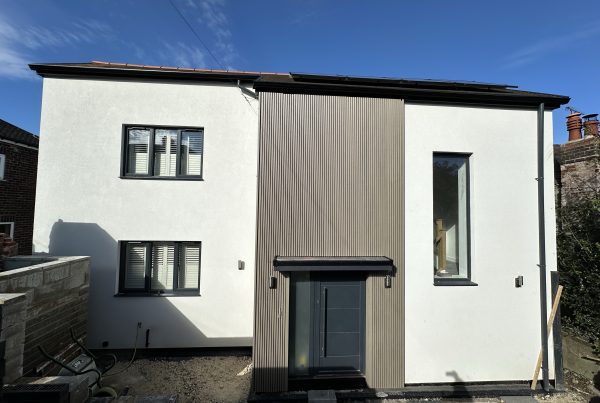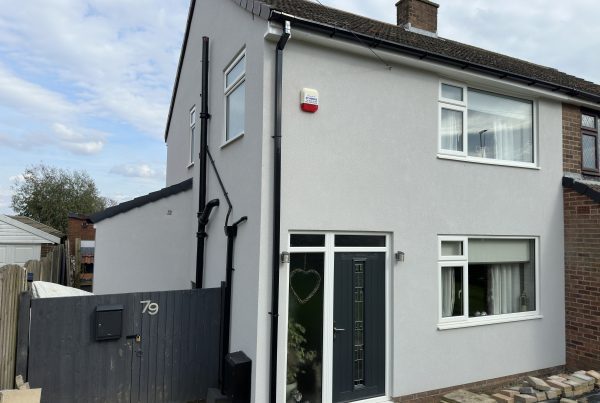When it comes to improving both the appearance and energy efficiency of your building, external cladding is one of the most effective solutions available. Not only does it provide a sleek and modern finish, but it also helps protect your property from the elements, reduces energy consumption, and adds an extra layer of insulation. In this article, we’ll explore different types of external cladding options, their benefits, and how to choose the right one for your project.
What Is External Cladding?
External cladding is the material applied to the exterior of a building for both aesthetic and protective purposes. It serves as the outer skin of a structure, offering protection against weather, sound insulation, and enhancing the overall look of your property. Whether you’re building a new structure or renovating an existing one, external cladding can significantly elevate the building’s performance and curb appeal.
Types of External Cladding Materials
There are several materials to choose from when selecting external cladding. Each has its own set of benefits, depending on your needs and the style you’re aiming for. Let’s take a look at some of the most popular options:
1. Timber Cladding
Timber cladding is a classic choice that brings warmth and natural beauty to your building’s exterior. Available in various finishes such as treated softwood, hardwood, and cedar, timber cladding is known for its environmental sustainability. It’s perfect for creating a rustic or traditional look. However, it does require regular maintenance to prevent weathering and damage from moisture.
Benefits:
- Natural and aesthetic appeal
- Environmentally friendly
- Insulates against heat and cold
2. PVC Cladding
PVC (Polyvinyl Chloride) cladding is a popular choice for homeowners and commercial properties due to its low maintenance and cost-effectiveness. This material is available in a range of finishes, including wood-effect designs that mimic the look of timber. PVC cladding is highly durable and resistant to moisture, making it ideal for areas that experience heavy rainfall or coastal conditions.
Benefits:
- Low maintenance
- Weather-resistant
- Durable and long-lasting
3. Metal Cladding
Metal cladding, often made from aluminium or steel, is a sleek and modern option for contemporary designs. It is highly durable and resistant to harsh weather conditions, providing excellent protection against wind, rain, and temperature changes. Metal cladding is often used in industrial and commercial buildings but is gaining popularity in residential applications due to its striking appearance and longevity.
Benefits:
- Long-lasting and durable
- Sleek, modern appearance
- Resistant to corrosion
4. Brick Cladding
For a timeless and durable option, brick cladding provides a traditional yet sophisticated look. It is a great choice for achieving a high-end finish while maintaining structural integrity. While brick
cladding is often associated with more substantial projects, it offers excellent protection and insulation for both modern and classic designs.
Benefits:
- Strong and durable
- Low maintenance
- Excellent insulation properties
5. Fibre Cement Cladding
Fibre cement cladding is made from a blend of cement, sand, and cellulose fibres, providing a lightweight yet durable material that’s highly resistant to fire, rot, and pests. It is available in various textures and finishes, making it versatile enough to suit a range of architectural styles. Fibre cement cladding is also fire-resistant, offering peace of mind for your property.
Benefits:
- Fire-resistant
- Low maintenance
- Durable in extreme weather conditions
How to Choose the Right External Cladding for Your Building
Choosing the right external cladding material depends on several factors, including the type of property you have, the local climate, and your aesthetic preferences. Here are some things to consider:
- Budget: Some materials, like timber and brick, can be more expensive than others, such as PVC or fibre cement. Choose a material that fits your budget without compromising on quality or durability.
- Climate: If your building is located in a region with extreme weather conditions (high humidity, heavy rainfall, or freezing temperatures), opt for materials like PVC, fibre cement, or metal that can withstand the elements.
- Maintenance: Consider how much time you’re willing to dedicate to maintenance. Timber cladding, for instance, requires regular treatment, whereas PVC and metal cladding are largely maintenance-free.
- Aesthetic Appeal: The appearance of the cladding is key to the overall look of your building. Whether you prefer a traditional, modern, or rustic finish, there’s a cladding material to match your vision.
Eurocell: A Trusted Supplier of External Cladding
When selecting the right materials for your external cladding project, it’s essential to choose a reliable supplier. Eurocell’s External Cladding Solutions offer a comprehensive range of high-quality products that combine durability with attractive design options. Whether you’re after a sleek, modern finish or a more traditional look, Eurocell has a variety of cladding materials to suit every project.
Conclusion
External cladding is an essential aspect of building design, offering both practical and aesthetic benefits. By selecting the right material, you can enhance your building’s appearance, improve its energy efficiency, and ensure its protection for years to come. Whether you opt for timber, PVC, metal, brick, or fibre cement, each cladding option brings its own set of advantages, so be sure to choose one that best suits your needs and budget.
For more information on the wide range of external cladding options available, check out Eurocell’s External Cladding page for expert guidance and product details.
Fatima Sanhaj
Company Director
Maca Rendering Ltd
0114 400 0129
07488733338




